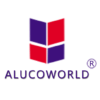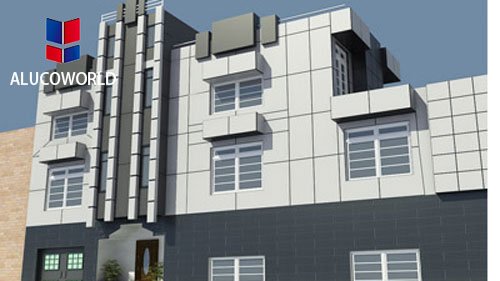Safety of aluminum-plastic panel curtain wall
(1) Curtain wall engineering should follow the principles of safety, reliability, practicality and economical rationality; curtain wall engineering materials, design, production, installation and construction and engineering quality acceptance. Should implement the industry standard JGJl33-2001 “metal and stone curtain wall engineering technical specifications”, 03J103-5 “aluminum-plastic composite panel (frame) curtain wall” and national standards GB50210 ~ 2001 “Building Decoration Engineering Quality Acceptance Specifications” and other relevant provisions.
(2) The curtain wall and its joints shall have sufficient bearing capacity, rigidity and displacement capacity relative to the main structure. The connecting metal corner code of the curtain wall frame column and other connecting parts shall be bolted and shall be protected against loosening.
(3) Curtain walls requiring fire performance shall comply with the relevant provisions of the current national standards “Code for Fire Protection of Building Design” (GBJ16) and “Code for Fire Protection Design of High-rise Buildings” (GB50045).
(4) The various embedded parts of the main structure and the curtain wall must meet the design requirements in terms of quantity, specification, location and anti-corrosion treatment. Contamination, can be gently cleaned with neutral detergent or alcohol, avoid using strong acid, strong alkaline detergent.
(5) The wall thickness of the aluminum alloy profiles at the joints and hangs of the unit curtain wall shall be determined by calculation. And should be ≥ 5mm.
(6) The metal frame and main structure of the curtain wall shall be connected by embedded parts. The embedded parts should be buried during the concrete construction of the main structure. When there is no condition to use the embedded parts to connect. Other reliable connection measures should be used and the bearing capacity should be determined through tests.
(7) The column should be bolted to the corner code. The diameter of the bolt should be calculated and should be ≥10mm. Different metal materials should be separated by insulating spacers when in contact.
(8) The treatment of the seismic joints, expansion joints, settlement joints, etc. of the curtain wall shall ensure the function of the joint and the integrity of the finish. Curtain wall engineering should be designed to meet maintenance and cleaning requirements.
(9) The main materials of the curtain wall project are three types of skeleton materials, plates and sealing joint materials. The selection of engineering materials should meet the requirements of national or unemployed standards. There should be a factory certificate, the physical mechanics and weather resistance of the material should meet the design requirements. The performance of the aluminum-plastic panel should meet the technical requirements of the external wall panel specified in the national standard GB/T17748 “aluminum-plastic composite panel”, in which the thickness of the two aluminum sheets on the aluminum composite panel is 0.5mm; the surface coating is fluorocarbon resin content i> 75%; film thickness ≥ 25m; l80. Peel strength ≥ 7.0 N/mm is especially important.
(10) The sealant sealant should be made of neutral silicone weatherproof sealant. A test report on the compatibility of the sealant application with the material being contacted. Curtain wall performance should meet the design requirements of wind pressure deformation performance, air permeability, and rain leakage performance.

